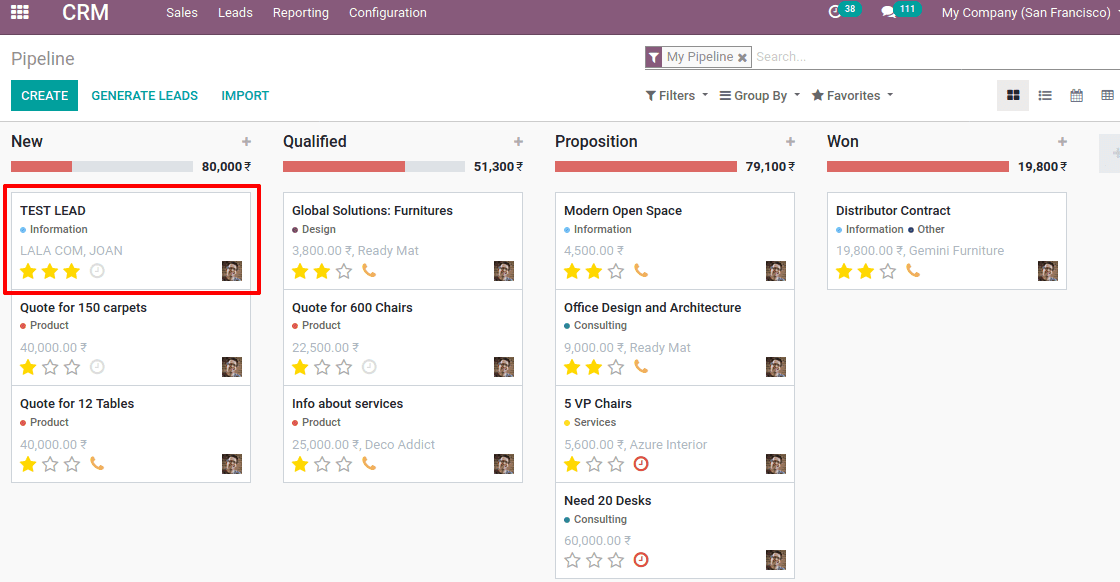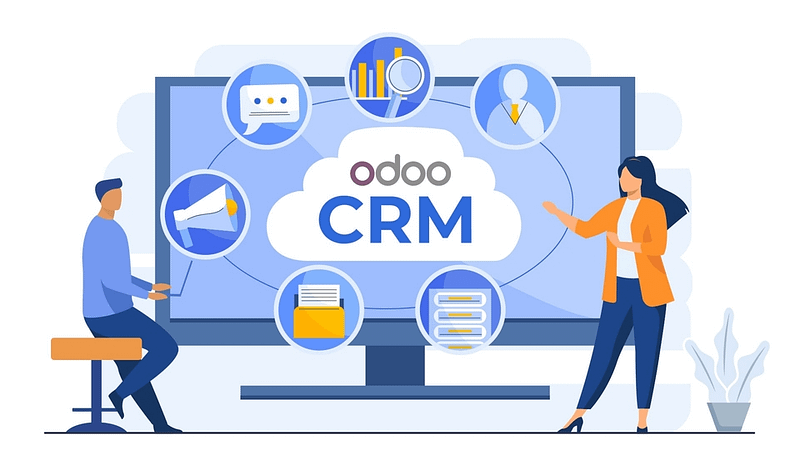In un’azienda ogni opportunità che arriva – che sia da passaparola, dal sito web, dalla pubblicità – deve essere seguita con cura. La lead management serve proprio a questo: a monitorare i contatti e lavorare per convertirli in clienti.
In questo articolo ne parliamo meglio: vediamo cos’è, perché è importante, quali sono i processi che la caratterizzano.
Vediamo anche come gestire tutti i lead in modo facile e proficuo con Odoo CRM.
Cosa è la lead management
La Lead Management è il processo che accompagna un lead a diventare potenziale cliente, monitorandolo e gestendolo. A volte viene indicato come customer acquisition management o contact management.
Una volta raccolto un lead (un potenziale cliente, una persona che ha mostrato interesse nei confronti dell’azienda) si cerca di qualificarlo, tracciando le sue attività, i suoi comportamenti, mettendo in atto azioni che lo coinvolgano e lo attirino e lo trasformino in un cliente.
Più l’azienda cresce più la lead management diventa un’operazione complessa. Gestire 100 lead è molto diverso da gestirne 1.000, 10.000, 100.000.
E anche quando il lead è diventato cliente, il lavoro non è finito: è importante continuare a coltivare i rapporti attraverso azioni di follow-up, per mantenere elevati livelli di soddisfazione e un’alta efficienza delle vendite.
Quali sono i vantaggi della lead management?
La Lead Management aiuta le aziende a capire quali strategie stanno ottenendo i migliori risultati, così ottimizzarle rendendole sempre più efficaci.
I vantaggi di una attività di Lead Management sono molti:
- Traccia le azioni dei potenziali clienti identificando dei pattern di comportamento utili in futuro;
- Separa contatti non in linea con gli intenti commerciali, diminuendo i costi e le perdite di tempo;
- Aumenta l’efficienza del processo di vendita, grazie all’automatizzazione di task ripetitivi e a un controllo migliore della sales pipeline;
- Migliora il monitoraggio e la reportistica aziendale;
- Aumenta la coordinazione dei vari reparti aziendali.
Qual è il processo di lead management?
Attraverso la lead management l’azienda gestisce, monitora e instaura un rapporto con il contatto.
Il processo copre diverse attività:
- Lead acquisition: acquisizione dei potenziali clienti tramite canali online (come campagne di sponsorizzazione o blog post) e offline (eventi, contatti diretti). Ad esempio un utente che effettua il download di un contenuto o che compila un form per richiedere informazioni diventa un lead, ovvero un contatto da gestire.
- Lead qualification: i contatti acquisiti devono essere filtrati, classificati e profilati per poter intraprendere azioni comunicative efficaci e pertinenti. Infatti non tutti i lead generati sono uguali: ad esempio alcuni utenti possono trovarsi nella fase informativa, altri più vicini all’acquisto.
- Lead routing: i lead vengono assegnati a un venditore, il cui scopo è veicolare i prodotti o i servizi in maniera proficua verso i clienti e concludere la vendita.
- Lead nurturing: i lead vengono “nutriti” nel tempo, ovvero seguiti e coltivati, attraverso l’invio di contenuti personalizzati a seconda delle esigenze.
- Re-engagement: i lead inattivi possono essere contattati con messaggi mirati in modo da far scaturire un potenziale interesse.
Dunque attraverso la lead management si accompagna il potenziale cliente lungo l’intero funnel, con l’obiettivo di condurlo a destinazione: acquistare i tuoi prodotti o servizi.
Come gestire la lead management con Odoo CRM
L’uso di un software consente di gestire in modo efficace il processo di lead management, riducendo i rischi di azioni di marketing e vendita sbagliate che allontanano il cliente dalla tua azienda.
Utilizzando Odoo CRM, modulo della suite all-in-one Odoo, puoi acquisire contatti da diverse fonti, incluso il sito web e l’e-commerce.
Puoi anche gestire i tuoi lead con azioni di lead nurturing, monitorando la progressione dell’interesse dei lead e comunicando con loro attraverso una chat integrata.

Mantenimento dei potenziali clienti
Odoo CRM permette di gestire i lead attraverso azioni di nurturing, programmando campagne di email marketing su misura inviate automaticamente e basate sui segmenti e le attività principali dei tuoi potenziali clienti.
Permette inoltre di parlare con i visitatori sul sito web attraverso la Chat live, così da avere un contatto immediato con i potenziali lead.
Valutazione dell'importanza dei potenziali clienti
Con Odoo CRM puoi classificare i tuoi potenziali clienti per tenere traccia dei lead. La classificazione avviene in base a criteri espliciti e impliciti, come pagine visualizzate, localizzazione, orario.
Puoi decidere il punteggio totale minimo che merita di essere convertito in un’opportunità di vendita e assegnare i punteggi ai vari contatti.
Così dai priorità a determinati clienti e pianifichi azioni in base alla qualità del lead.
Regole di assegnazione
Odoo CRM consente di stabilire le tue regole per assegnare clienti potenziali al giusto addetto vendite o team di vendita, basandosi su quote e segmenti.
In questo modo tutto il tuo staff saprà quali potenziali clienti gestire e contattare.
Gestione canale (pipeline)
Odoo CRM ti offre una chiara panoramica della pipeline delle opportunità e ti fa lavorare più velocemente con l’interfaccia trascina & rilascia.
Permette di impostare fasi specifiche per ogni team di vendita e di creare sotto-fasi per organizzare meglio i processi.
Consente inoltre di archiviare opportunità perse e di analizzarne le ragioni per migliorare l’efficacia delle vendite.
Analisi di opportunità e clienti
Attraverso l’impostazione di filtri avanzati, raggruppamenti, menù a cascata, Odoo CRM ti fornisce un quadro completo di tutti i canali di opportunità da sfruttare per tracciare i lead e concludere le vendite.
Permette inoltre di ottenere statistiche sulle fonti delle tue vendite potenziali per valutare il ritorno sugli investimenti (ROI) delle campagne di marketing.

Gestisci i tuoi lead in modo efficace con Odoo CRM
Contattaci: ti presenteremo il software e ti forniremo una demo gratuita.



